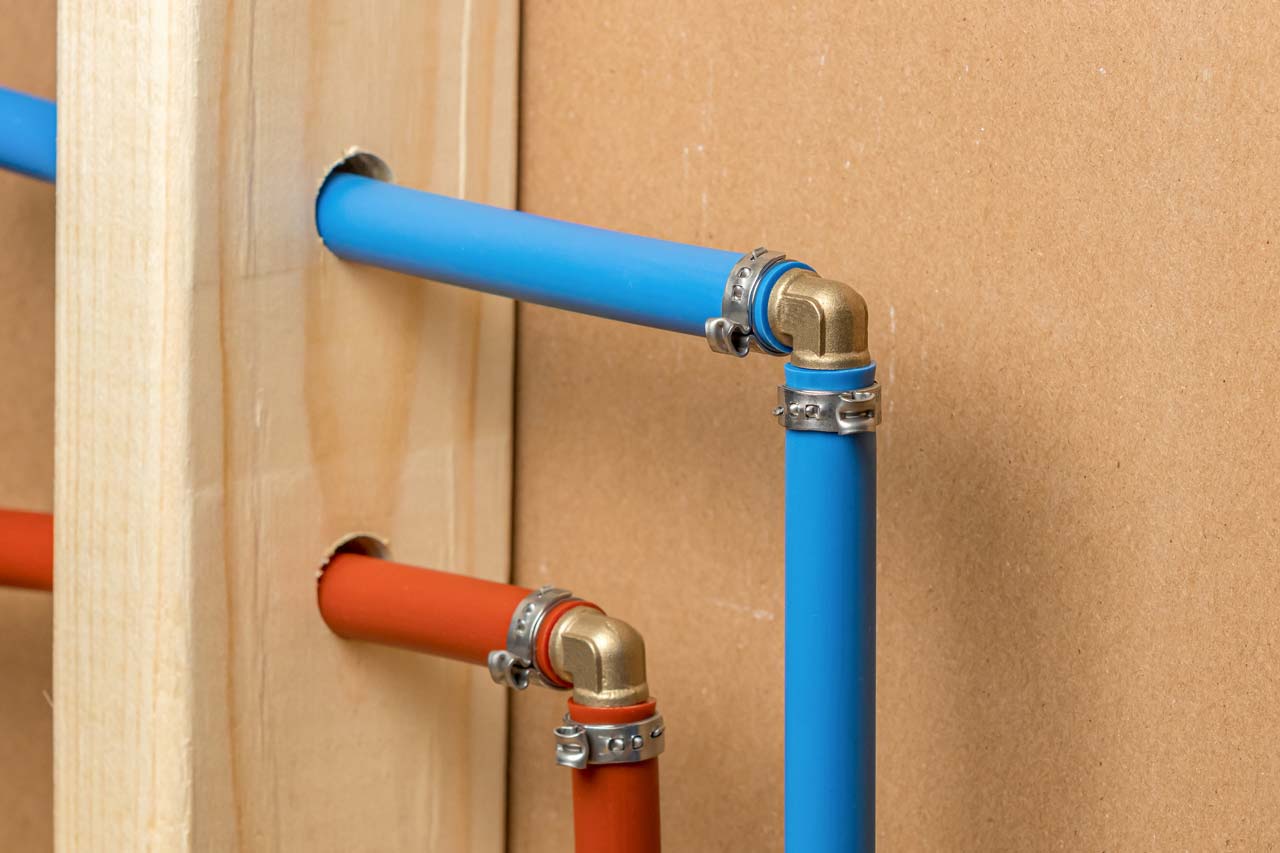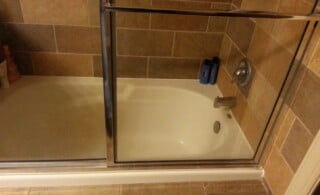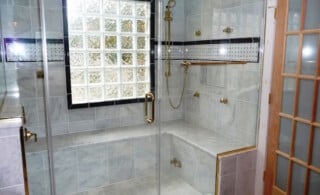 Photo: JJ Gouin / iStock / Getty Images Plus / Getty Images
Photo: JJ Gouin / iStock / Getty Images Plus / Getty Images
PEX pipe is short for cross-linked polyethylene—a plastic that’s flexible and good at resisting cracks and high temperatures. The brightly colored tubing is a staple in home plumbing projects, allowing you to replace old copper or galvanized steel pipes with lightweight, resilient materials.
Find out more about what PEX piping is, where it can be used in your home, its pros and cons, and why it may be worth reconsidering copper for PEX.
In this article:
- How PEX Pipes Work
- PEX Home Projects
- PEX Pipe Advantages
- PEX Pipe Disadvantages
- Copper vs. PEX Plumbing
- FAQs
How Do PEX Pipes Work?
Rolls of PEX pipe tubing can be found at most hardware stores and in professional plumbers’ toolkits. The piping comes in standard diameters of 1/2 inch and 3/4 inch and lengths of anywhere from 10 feet to 100 feet. Crimp and fitting pieces at the end of the tubing connect the piping together.
Even PEX pipe coloring has a purpose, with certain colors assigned to specific types of water: Red piping carries hot water, blue piping runs cold water, and white and gray are for hot or cold.
Home Projects That Use PEX Pipe
PEX is a relatively new development. It found its way onto the scene in the mid-20th century and entered mainstream materials as part of radiant flooring installations in the 1980s. Its budget-friendly price tag and durable properties made it an easy choice for many home renovations and projects like plumbing and flooring.
Radiant Flooring
Radiant flooring is the first major home project that incorporated PEX pipe. The tubing can be found in service lines where you need to run water, enabling hot water to be pumped through piping underneath slab installments. The hot water heats the slab or tile above, making floors warm and toasty.
Plumbing
PEX pipes are also used for plumbing since they’re durable, crack-resistant, and can accommodate different setups. Over time, copper and galvanized steel can become susceptible to corrosion. PEX plumbing systems are a safe replacement for old pipes and upgrades to your home system. The average cost to install a water main is around $1,600.
Find a Plumber Near YouPEX Pipe Advantages
PEX pipe offers many compelling advantages to homeowners. However, a few stand above the rest when comparing them to other standard pipe materials. PEX pipe’s advantages include a budget-friendly price tag, ease of installation, and corrosion resistance.
Budget-Friendly
The cost to repipe a house with PEX is around $0.40 to $2 per linear foot for materials and labor. Copper is likely around double the project cost of PEX. Discolored water, clogs, bad water pressure, or a change in the taste of tap water are all signs it’s time for new pipes.
Easy to Install
The flexible piping can be integrated into tighter spaces and framing. PEX also couples with other material types like chlorinated polyvinyl chloride (CPVC), which is helpful for upgrading spaces room by room as your budget allows. It’s ideal for installation with manifold water distribution systems.
Resistant to Corrosion
Unlike copper, PEX doesn’t face the same corrosion risks. It’s also resistant to chlorine and mineral scale buildup. These practical features mean your water stays clean and flows without issues like mineral buildups.
PEX Pipe Disadvantages
While PEX is often a dependable choice, a few drawbacks exist. These may include the special connectors required for installation, their susceptibility to damage when exposed to external heat and UV light, and a risk of bursting when non-insulated and in cold temperatures. The typical cost to fix a burst pipe is $500.
Requires Special Connectors
One disadvantage of PEX is that it requires special fittings and connectors for installation. It’s best to have a professional plumber near you who has specialized tools to help with your repiping project so they can ensure the integrity of the installation.
Susceptible to Damage From Heat and UV Light
Avoid placing PEX piping near recessed lighting and hot water heaters because extreme heat can impact the pipe’s integrity. Direct sunlight can also degrade PEX piping. If you have any extra PEX pipe on hand, make sure to keep it cool and in dark storage.
Copper vs. PEX Plumbing
Copper costs significantly more for piping installation materials and labor, at approximately $2 to $8 per linear foot. Like PEX, it has proven durability. However, unlike PEX, it’ll hold up to UV exposure. Both materials have comparable life spans and can hold up over the years with the proper installation.
FAQs
Can PEX plumbing freeze?
While more cold-resistant than other piping materials, PEX can freeze with cold temperatures around 20 degrees Fahrenheit and lower but is less likely to rupture than copper. However, bursting pipes are still possible, especially if the line is uninsulated. Insulating vulnerable pipes and turning off supply lines to outside faucets during the colder months—like winterizing your garden hose and spigot—are ways to prevent frozen PEX pipes.
Is PEX better than PVC?
Polyvinyl Chloride (PVC) and PEX are both popular building materials for new construction and replacement installations—both are resistant to corrosion but have a few key differences. PEX is more expensive than PVC, however, PVC has a longer lifespan. The downside is that PVC is not well-suited for hot water, and PEX handles varying temperatures better. PEX is also lightweight and easy to connect together.
How many years does PEX pipe last?
Properly installed PEX piping also offers exceptional value and holds up well over time, with an expected life span of 80 to 100 years. PEX installations also require very little maintenance and are easy to update, scale in size, or replace pieces as needed to keep the plumbing system in top condition. PEX piping’s lifespan may be affected by outdoor temperatures, so it is preferable for indoor plumbing projects only.
Still Have Questions? Ask a Plumber Tub and Stall Shower Installation
Tub and Stall Shower Installation  Water Softening Systems Filter Out the Hassles
Water Softening Systems Filter Out the Hassles  4 Types of Septic Tanks
4 Types of Septic Tanks  Clogged Drain Fixes
Clogged Drain Fixes  Common Shower Door Problems
Common Shower Door Problems 

Are You Familiar With This Topic? Share Your Experience.